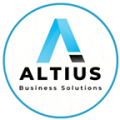Equipment financing is the procedure of getting a loan or lease to receive business-related tools. Organizations can operate tools financing to buy almost anything their business needs, aside from actual estate. This contains company automobiles, technology, production tools, office furniture, medical equipment, and other important items. By leveraging equipment financing, businesses can release up their operating capital and ensure the required tools to support and develop their functions.
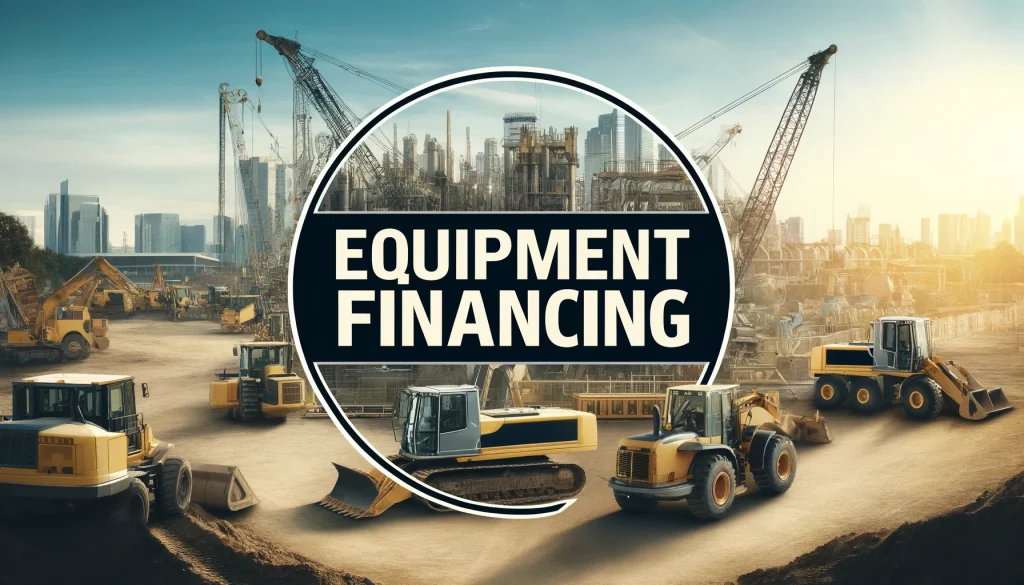
Business Funding, Leasing, Consolidations As Fast As 24 Hours (919) 752-4510
Key Takeaways
- Equipment financing permits businesses to receive vital equipment without the requirement for weighty upfront expenses.
- There are different kinds of equipment financing opportunities available, including loans and leases, each with its advantages.
- Equipment financing can be utilized for a wide scope of items, from vehicles and technology to medical equipment.
- Comprehending the distinctions between equipment loans and leases is essential for selecting the correct choice for your business.
- Tax usefulness, such as Section 179 deduction and devaluation usefulness, can make tools financing more financially appealing.
Understanding Equipment Financing

Equipment financing is the method of getting a loan or lease to obtain business supplies. Organizations can utilize equipment financing to buy almost anything their business requirements, aside from real estate. This includes company vehicles, technology, production equipment, office furniture and fixtures, medical supplies, and more. Equipment financing is essential for businesses to keep cash flow while developing critical support.
Purchasing Equipment with a Loan
The equipment processes as protection for a loan that you carry out to purchase business equipment. As a consequence, in the circumstance that the borrower defaults on the loan, the lender has a mortgage on the tools and may hold it.
A bank or other lender might be willing to lend up to 100% of the equipment’s weight because there is important protection for the loan; however, loans up to 80% of the equipment’s worth are more distinct. Therefore, the borrower may still be needed to create a significant down payment even while getting an equipment finance loan.
An owner of a business should entirely evaluate their capability to repay loans. It might be smarter for them to lease the equipment if they have worries about their capacity to create the payments.
Business equipment loans have durations varying from a infrequent months to ten years or more. Equipment finance interest rates can fluctuate significantly, from 4% to 5% to 30%. The key determining variables are the period of the loan, the credit rating of the company or business owner, the length of the loan term, and the predicted value retention of the bought equipment.
Purchasing equipment rather of leasing it presents several benefits, one of them being that the business will own a useful investment once the equipment loan is refunded. The equipment that has already been bought might be used as loan collateral to get more reasonable loan terms if the company desires to borrow money for other causes, like developing operations.
Types of Equipment Financing
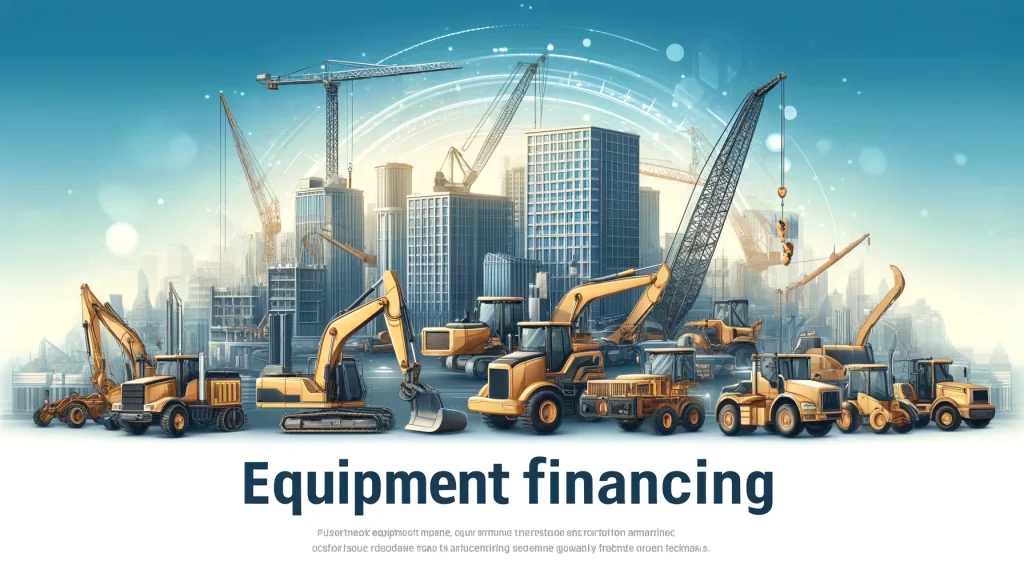
There are several kinds of equipment financing opportunities available, including:
- Equipment Financing Loan: A loan especially for purchasing equipment, where the equipment itself usually functions as collateral.
- Leasing: Renting equipment for a distinct period, with opportunities such as operating leases and finance leases.
- Lease-To-Own: A lease agreement that contains an opportunity to buy the equipment at the end of the lease period.
- Sale-Leaseback: Selling owned equipment to a lender and then leasing it back, delivering quick capital while maintaining usage of the equipment.
BUSINESS EQUIPMENT FINANCING
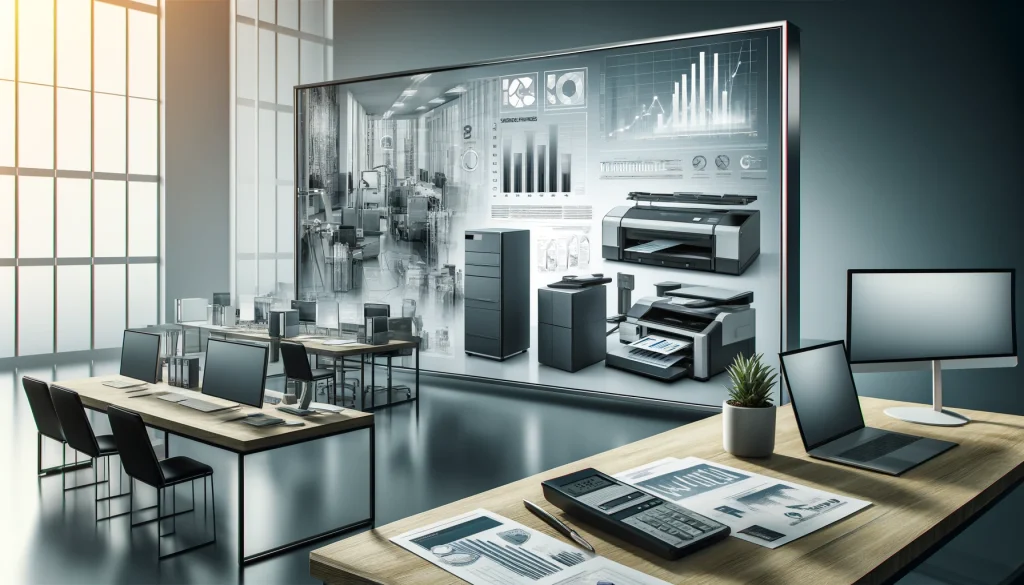
Business equipment financing is a more comprehensive type that encloses financing for a wide spectrum of business equipment, not just heavy machinery. This kind of financing can be utilized to buy tools, computers, vehicles, or any other kind of equipment that a business requires to work. Business equipment financing can come in the shape of loans, leases, or lines of credit, and the terms and format of the financing will vary depending on the lender and the precise equipment being funded.
POWER EQUIPMENT FINANCING
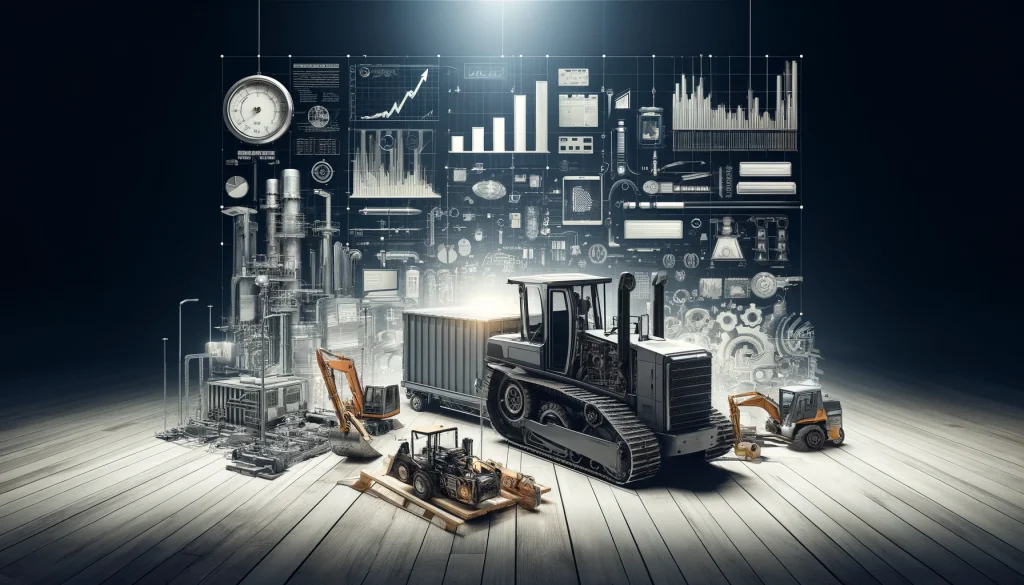
Power equipment financing is a kind of financing especially designed for businesses examining to buy or lease power equipment such as generators, forklifts, air compressors, and other machinery employed for powering functions. This kind of financing permits businesses to obtain the equipment they require without having to spend the full cost upfront, making it more reasonable and effortless for businesses of all sizes. Power equipment financing generally involves a lender delivering the funds to buy or lease the equipment, with the business compensating the loan amount over a set period with interest.
DENTAL EQUIPMENT FINANCING
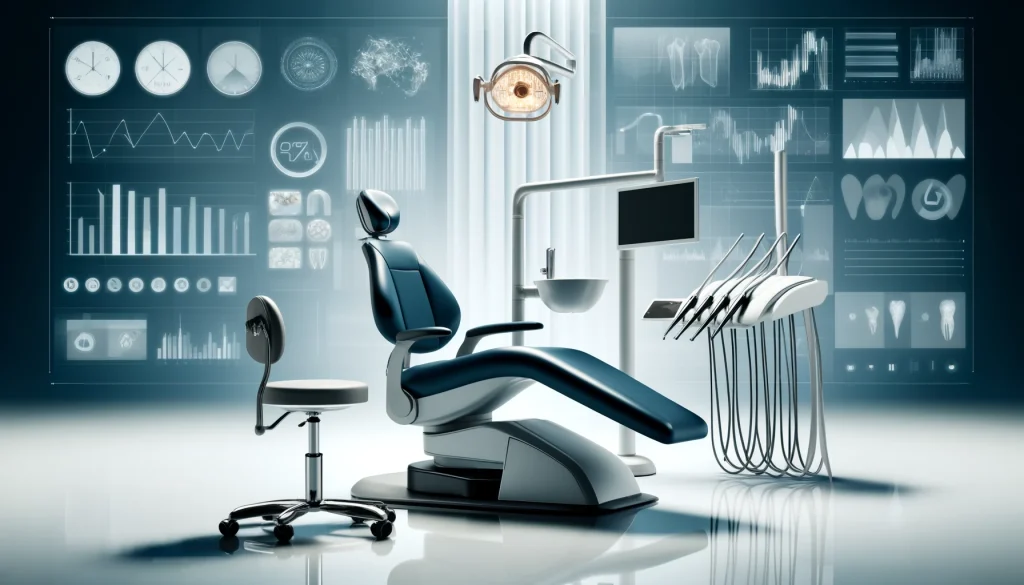
Dental equipment financing is a method for dentists and dental practices to obtain the necessary equipment and technology they require to supply quality care to their patients. This kind of financing permits dental professionals to buy or lease equipment such as dental chairs, X-ray machines, sterilization units, and other important means for their procedure. By ensuring financing, dentists can circulate out the price of equipment over time and bypass a large upfront payment, making it more effortless for their funding.
RESTAURANT EQUIPMENT FINANCING

Restaurant equipment financing is a technical kind of business tools financing that is tailored to the requirements of restaurants and other food service businesses. This kind of financing can be utilized to buy commercial kitchen equipment, furniture, fixtures, or any other equipment required for running a restaurant. Restaurant equipment financing may be presented by banks, technical lenders, or equipment manufacturers, and can help restaurant owners obtain the equipment they require to begin or grow their business. Financing opportunities for restaurant equipment may contain equipment leases, equipment loans, or equipment financing contracts.
GYM EQUIPMENT FINANCING

Gym equipment financing is a kind of financing especially designed for businesses or people glancing to buy gym equipment. This sort of financing permits them to distribute out the price of purchasing equipment over some time, generally through a loan or lease agreement. This can cause it more comfortable for gym owners to obtain the equipment they require without having to pay the entire expense upfront.
HEAVY EQUIPMENT FINANCING

Heavy equipment financing is a kind of loan or financing choice especially developed for businesses skimming to buy large, costly pieces of equipment such as building machinery, agricultural machinery, industrial supplies, and more. This kind of financing allows businesses to obtain the equipment they require without having to spend the whole cost upfront.
There are different opportunities for weighty equipment financing, including standard term loans, equipment financing agreements, leasing options, and more additional. Lenders generally need detailed knowledge about the equipment being financed, such as construct and model, age, state, and value, in order to define the duration and interest rates for the financing.
Businesses can profit from weighty equipment financing by applying out the price of developing equipment over time, maintaining capital for other business requirements, taking benefit of tax advantages, and improving their prevailing productivity and efficiency with the benefit of latest equipment.
HEAVY EQUIPMENT FINANCING NEAR ME
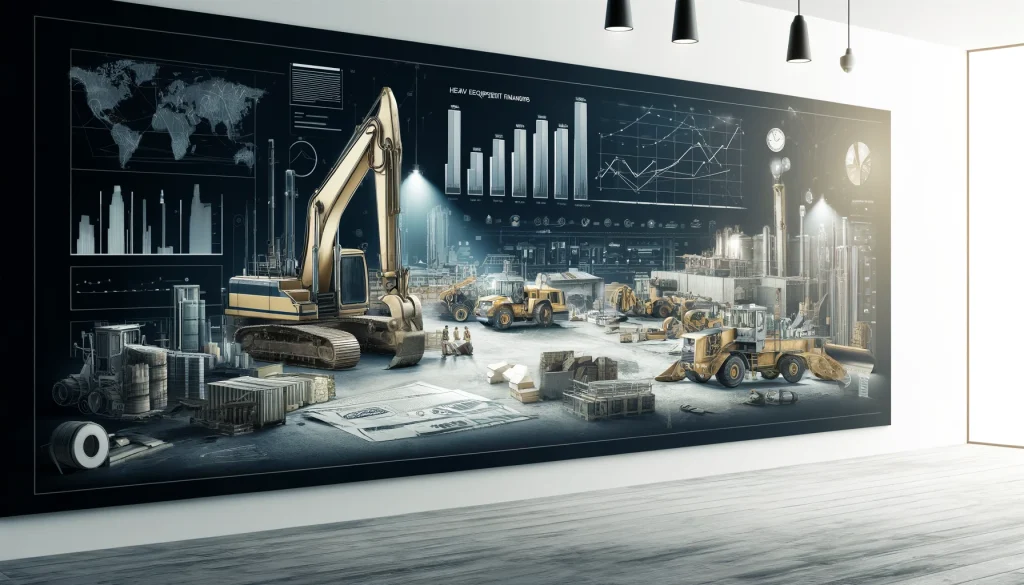
If you are examining for heavy equipment financing around you, it’s best to begin by doing a regional search online or advancing out to local banks and financial organizations in your region. You can also contact tools dealerships and leasing businesses to ask about financing opportunities for heavy supplies. Besides, you can utilize online platforms and aids such as finance and lending websites to locate lenders who specialize in heavy equipment financing in your location. It’s essential to research and correspond additional financing opportunities to discover the best terms and rates for your requirements.
Bank of America
Presents top construction and heavy equipment financing opportunities for a wide scope of equipment requirements.
Loan amounts From $25,000
Beginning interest rate 7.00%
Duration length (months) 60 months
Lowest credit score Not announced
Lowest time in business 2 years
PROS:
- This can be used for a various display of equipment, including heavy duty commercial automobiles.
- Customers registered in Bank of America’s Preferred Rewards program may be suitable for lowered interest rates.
- This assistance presents financing alternatives like loans, leases, and lines of credit.
CONS:
- An originating fee equivalent to 0.50% of the financed payment will be charged.
- Funding may take up to 10 days after acceptance of your application.
- To be qualified, a minimum of two years in function and annual income of at least $250,000 are needed.
Why we chose it
0.50% is known for its adaptable equipment financing opportunities and customer-focused benefits. They present loans with no maximum amount, making them eligible for a wide spectrum of business needs. One of the standout elements of 0.50% is their capacity to finance a combination of equipment, from broad machinery to heavy-duty commercial automobiles. In addition to conventional loans, they also supply leasing and lines of credit, offering businesses numerous opportunities for financing required equipment.
Wells Fargo
Top selection for structure companies pursuing financing for construction and heavy equipment
PROS:
- Opportunities for adjustable financing, such as balloon or seasonal payments and sale and leaseback arrangements, are delivered to customers.
- Wells Fargo delivers the option for customers to buy fresh or pre-owned commercial and industrial
supplies.
- This benefit is available in every state across the United States and in Canada.
CONS:
- Large minimum loan/lease amounts demonstrate that funding is restricted to large-ticket items.
- doesn’t make rates or loan terms available to the public
- Considerable criminal and civil investigations into unethical manners have concentrated on Wells Fargo.
Why we chose it
For well-established building companies, Wells Fargo is a reliable choice, suggesting loan amounts as low as $100,000. The bank’s understanding of the different cash flow practices in the construction industry is what really makes it stand out. It satisfies the special requirements of the construction sector by delivering flexible financing options, such as balloon or seasonal payments, as well as sale and supplies leaseback dealings. Similarly, Wells Fargo is more than merely a lender; its Equipment Seller section allows companies to purchase industrial supplies and both renewed and operated equipment.
Taycor Financial
Best loan for heavy machinery and construction for new companies
Loan amounts $500 to $2,000,000
Starting interest rate Not revealed
Duration length (months) 84
Lowest credit score 550
Lowest time in business None
PROS:
- Loans up to $400,000 do not need tax statements.
- The entire application procedure can be done online.
- Founded on a one-page application, recommendations for loans up to $150,000 can be approved in a case of hours.
CONS:
- requires first and last payments for tools leases to be completed in advance.
- Extra paperwork is required for larger and more convoluted funding requirements, such as tax returns, financial documents, and bank accounts.
- On some transactions, origination and documentation fees might be considered.
Commercial Fleet Financing
The most suitable loans for heavy machinery and construction for the trucking business
Loan amounts $10,000 to $1,000,000
Beginning interest rate Not revealed
Time length (months) 60
Lowest credit score 640
Lowest time in business Not declared
PROS
- Customers with earlier liens, judgments, or bankruptcies may be qualified for financing.
- Perhaps a smart option for a quick business loan: receive an application that has been achieved in as little as two hours.
- For consumers with perfect credit, there is no down cost required
CONS:
- doesn’t show interest rates to the public
- Those who have had credit problems in the past will require to make a down payment.
- Documents of bank statements, retrievals for taxes, and equipment demands can be required.
Why we chose it
In extra to financing semi-trucks and trailers, Commercial Fleet Financing also finances building equipment. They may customize finance to fulfill the exact requirements of the construction industry with time lengths of up to nine years and loan amounts varying from $10,000 to $1,000,000. Given that even people with past liens, judgments, and bankruptcies may be suitable for funding, they are conscious of the problems encountered by business owners in this industry. But in specific cases, a down payment can be required.
U.S. Small Business Administration
Long-term loans for weighty machinery and construction are the most suitable choices.
Loan amounts Up to $5,500,000
Beginning interest rate Changes by month and loan period
Term length (months) 120, 240 or 300
Lowest credit score N/A
Lowest time in business Two years
PROS:
- may also be used to purchase or remodel real estate and buildings.
- You can repay loans over a most of 25 years with comprehensive lending terms.
- The SBA caps interest rates, holding them useful.
CONS:
- Not directly from the SBA, but only through Certified Development Companies (CDCs)
- You must attach to the SBA’s size conditions.
- Fees charged by the SBA or CDCs could increase the overall expense of borrowing.
Why we chose it
The Small Business Administration (SBA) of the United States delivers sizable loans at reasonable interest rates. The SBA’s 504 loan program may finance tools and help construction businesses in supporting the buy and renovation of buildings and land, with loans of up to $5,500,000. But the 504 program’s payback schedule is even where it excels. By supplying durations of 120, 240, or 300 months, businesses can help cash flow restrictions by applying out their financial accountabilities.
Key Benefits OF EQUIPMENT FINANCING
The key advantages of equipment financing contain:
- Preservation of Cash Flow: By applying out the price of tools over time, businesses can keep liquidity for other functional requirements.
- Access to Up-to-Date Equipment: Financing permits businesses to obtain the latest technology and tools without the burden of large upfront expenses.
- Tax Advantages: Specific kinds of equipment financing, such as leases, may suggest tax benefits like premises on lease payments.
- Flexible Terms: Financing resolutions can be tailored to fulfill the precise requirements and financial conditions of businesses.
Equipment financing is a adaptable solution that helps different industries, from medical supplies financing to gym supplies financing and dental equipment financing. It permits businesses to expand and innovate without the stress of considerable initial investments.
How Equipment Financing Works
Loan Process
Equipment financing supplies you with equipment for your business. You make periodic payments for the equipment cost plus interest. Once the repayment term for your loan is over, you’ll either own the equipment outright or will require to make a judgment on restarting your lease or not. Practically any kind of equipment can be funded for your business so your processes run smoothly and remain competitive.
Lease Process
Similar to an auto loan for purchasing a car, equipment financing permits a business owner to buy a piece of gear with payments created over time. Whereas with an equipment lease, a business owner can lease equipment with periodic payments and without the purpose of possessing it. When the lease stops, there is generally an opportunity to resume the lease again or replace the equipment.
Approval Criteria
Approval for equipment financing typically relies on several elements:
- Credit Score: A higher credit score improves the possibility of acceptance.
- Business Financials: Lenders will check your business’s financial information.
- Equipment Type: The kind and age of the equipment can impact permission.
- Down Payment: A larger down cost can enhance your options.
Comprehending the acceptance criteria can assist you competently prepare your application and improve your probabilities of ensuring financing.
How Does Small Business Equipment Financing Work?
Heavy equipment finance is the procedure of acquiring a powerful piece of machinery for your company via a loan or lease. Taking out a loan entails borrowing money from a lender, using it to spend for the equipment now, then slowly repaying the debt over several months or years. In core, a lease permits you to receive the tools and pay for its use slowly. But a lot of leasing plans also supply an opportunity to purchase the equipment at the end of the lease, or just a piece of it. Small company owners may aid from this in that they can select to resume utilizing a particular piece of equipment that has worked well for them in the past and buy it for a remarkably lower price than you would have to pay for a brand-new item. Once the gear has helped its value for your company, you may even present it, which shows an added advantage.
Important Financial Considerations For Small Businesses
The majority of little firms lack the significant financial resources that larger, more founded companies continually contain. Offered modest yearly revenues, owners and decision-makers at these small businesses must exert excessive warning in their financial findings and in how they bear significant costs.
Buying something outright is usually not a good option because it secures up too much money in a single investment, particularly when considering the need of big assets like heavy equipment while also maintaining reserves of cash and operating capital under check. This may drain your general funds and make it more challenging for your business to manage problems.
Small business owners may rather desire to utilize leasing and financing solutions for heavy equipment. This approach permits you quick key to the necessary machinery while spreading the investment expenditure across several monthly installments.
It is extensively more straightforward to create plans for financial obligations when there is a straightforward repayment schedule for the loan, lease, or company financing option. Another important aspect to take into account in this position is flexibility. With more concise and longer durations available, the repayment schedule associated with heavy equipment financing is continually adjustable.
There is abundance of space in the middle for businesses to set an proper balance, even if all lenders will set more elevated and lower limits concerning the duration of a lease and the repayment of a business loan. Keep in mind that while a shorter term outcomes in a larger total amount spent as time expires due to interest, a longer time will have less monthly payments. Together with your lender, you can choose the balance that most useful suits your individual conditions.
Types of Equipment That Can Be Financed
Vehicles
Vehicles are one of the most typical kinds of equipment that businesses finance. This contains cars, trucks, vans, and specialized vehicles like delivery trucks or construction vehicles. Financing vehicles can assist businesses handle cash flow while providing they have the required transportation to function efficiently.
Technology and IT Equipment
Technology and IT equipment are essential for modern businesses. This type includes computers, servers, software, and other tech-related items. Financing these items permits businesses to stay up-to-date with the latest technology without the load of large upfront expenses.
Medical Equipment
Medical equipment financing is important for healthcare providers. This can include diagnostic machines, surgical instruments, and patient care equipment. By funding medical equipment, healthcare facilities can confirm they have the latest means to supply high-quality care.
The versatility of equipment financing protects a wide scope of items, allowing businesses to overwhelm considerable upfront expenses and sustain working efficiency.
What is equipment lease financing?
Equipment lease financing is a type of financing in which a company or individual leases equipment from a leasing company for a specified period of time, typically on a monthly basis. The leasing company owns the equipment and the lessee pays a recurring fee to utilize it. This sort of financing is usually selected by companies who do not desire to commit to the long-term payment of purchasing equipment outright, or who require to preserve their capital for other assets. At the end of the lease term, the lessee may have the opportunity to buy the equipment at a discounted price or replace it to the leasing company.
Equipment Loan vs Equipment Leasing
Equipment financing usually comes in the build of an equipment loan or lease. While they may sound identical, there are some essential distinctions between the two conditions of financing. With equipment leasing, companies pay to operate equipment for a fixed timeframe without holding it. Contrarily, equipment financing is a loan that allows companies to buy and own tools while refunding the loan over time. Comprehending the distinction between leasing and financing can aid your business make informed judgments.
Equipment Lease Financing
PROS
Installments due each month: You can acquire the equipment you need directly away with a lease agreement since its monthly costs may be less costly than those of a financing agreement.
Initial payment: You might not require to create a down payment up front with equipment financing, which might result in short-term of hundreds or thousands of dollars.
Modernized apparatus: If you require to boost or return your equipment frequently, leasing could be a suitable choice.
CONS
Won’t possess any gear: After your lease, you won’t own your supplies outright, unlike when you finance it. It might be within your reach, but there can be a considerable balloon payment concerned.
Deposit for security: Specific leasing contracts call for an upfront security deposit, which you threaten losing if you don’t replace the equipment in working order.
Deductible taxes: When financing, you can normally write off the interest on your loan as well as the depreciation on your equipment. If you lease, this may not be an opportunity for you.
Equipment Loan Financing
PROS
Keep the machinery. At the closing of your equipment finance time, you will own your equipment outright, unlike when leasing.
Able to sell the machinery: You have the opportunity to recoup part of your payments by vending your equipment.
Deductions for taxes: It’s likely that your company can remove asset depreciation and loan interest from its taxes.
Initial payment: You might be needed to make a down payment for equipment financing, which could be a sizeable upfront cost.
Cost per month: Leasing may be less costly each month than financing, especially if the loan has a high interest rate.
Equipment may become antiquated: If your equipment gets old, it might not be in the best interests of your company to buy it through a finance contract.
Choosing the Right Option
Selecting between an equipment loan and equipment lease financing relies on your business requirements and financial condition. If you require to update equipment regularly and favor lower monthly payments, leasing might be the more suitable choice. On the other hand, if owning the gear and helping from depreciation is more meaningful, then a loan would be more appropriate.
If you want to minimize your short-term costs, a leasing arrangement can be a more suitable option. Corresponded to financing, leasing could feature lower monthly payments and no down payment conditions. It might also be useful if you’re aiming to buy appliances, workplace equipment, or other items that frequently need to be updated with latest models.
However, if you desire to accumulate equity in your equipment and take control at the ending of the term, financing can make meaning. For example, if you’re purchasing big, sturdy machinery or cars, you might not be worried about holding to return the things very shortly. If you determine to utilize financing rather than leasing, you can also acquire some tax advantages.
It’s important to consider your business’s long-term objectives and financial health to make the best decision between leasing and financing.
Flexible Financing Solutions
Lease-To-Own
Lease-to-own agreements permit businesses to lease gear with the option to buy it at the ending of the lease term. This opportunity is perfect for companies that like to finally own the tools but require to handle their cash flow in the short term. Lease-to-own solutions supply flexibility and support businesses bypass large upfront expenses.
Sale-Leaseback
A sale-leaseback deal concerns selling an owned asset to a lender and then leasing it back. This explanation can free up capital that is tied up in equipment, delivering quick cash flow while still permitting the business to operate the equipment. It’s a strategic method to enhance liquidity without disrupting processes.
Trade-In and Trade-Up
Trade-in and trade-up programs allow businesses to trade their old gear for newer models. This opportunity allows companies stay present with the latest technology and support working efficiency. By dealing in old equipment, businesses can lower the cost of developing new equipment and bypass obsolescence.
Flexible financing solutions like lease-to-own, sale-leaseback, and trade-in and trade-up programs show businesses different methods to control their equipment requirements while optimizing cash flow and operating efficiency.
Tax Benefits of Equipment Financing
Section 179 Deduction
One of the most important tax advantages of equipment financing is the Section 179 deduction. This requirement of the IRS tax code permits businesses to remove the entire purchase price of permitting equipment financed during the tax year. This can guide to substantial savings for your business. By leveraging Section 179, companies can lower their taxable payment and enhance their cash flow.
Depreciation Benefits
In addition to the Section 179 deduction, businesses can also benefit from devaluation. Depreciation lets companies to distribute the expense of the tools over its usable life, delivering annual tax deductions. This can be especially helpful for costly equipment, as it allows to compensate the cost over several years.
Tax Planning Tips
Effective tax planning is important to maximize the advantages of equipment financing. Here are some suggestions:
- Consult with a tax professional: Confirm you are accepting complete benefit of all known deductions and credits.
- Keep detailed records: Keep detailed documentation of all gear purchases and financing deals.
- Plan your purchases: Time your equipment buys to align with your tax strategy, potentially making important buys before the end of the tax year.
Proper tax planning can greatly improve the financial usefulness of equipment financing, allowing your business to succeed and prosper.
Financing Programs for Start-Ups
Eligibility Criteria
Start-ups often encounter special challenges when pursuing equipment financing. Eligibility standards can differ greatly between lenders, but common conditions include a solid business plan, a good credit score, and occasionally a personal guarantee from the business owner. Some lenders may also need a minimum time in business, generally varying from 6 months to 2 years.
Types of Programs Available
Several financing programs are tailored especially for start-ups:
- Small Business Administration (SBA) Loans: These loans are partly secured by the government, making them less dangerous for lenders.
- Equipment Leasing: Lets start-ups to operate the equipment without the requirement for a large upfront investment.
- Vendor Financing: Some tools vendors present financing choices directly to start-ups.
- Crowdfunding: An alternative approach where start-ups can increase funds from a large number of people, generally via online platforms.
Success Stories
Many start-ups have successfully leveraged equipment financing to expand their businesses. For instance, a tech start-up operated an SBA loan to buy necessary IT equipment, allowing them to scale functions rapidly. Another start-up in the healthcare sector opted for equipment leasing, which permitted them to save cash flow while developing state-of-the-art medical devices.
Equipment financing can be a game-changer for start-ups, delivering the essential tools to contend and succeed in their individual industries.
Pre-Approval for Equipment Financing
Benefits of Pre-Approval
Pre-approval for equipment financing presents several benefits. It supplies businesses with a transparent budget, authorizing them to concentrate on discovering the proper equipment without disturbing about financing. Further, pre-approval can hurry up the purchasing procedure, making it more comfortable to act fast when a good deal appears.
How to Get Pre-Approved
To reach pre-approved for equipment financing, follow these measures:
- Gather required financial documents, such as bank statements and tax returns.
- Get an equipment quote from a dealer.
- Submit a pre-approval application to your preferred lender.
- Await the lender’s decision, which normally takes a few days.
Documents Required
When applying for pre-approval, you will require to supply the following documents:
- Financial statements (e.g., balance sheets, income statements)
- Bank reports
- Tax returns
- Equipment quote from a vendor
- Business plan (if applicable)
Pre-approval can greatly simplify the equipment financing strategy, giving businesses a competitive border in developing vital assets.
Used Equipment Financing
To put it just, used equipment financing is retail debt used to finance the buy of secondhand machinery. There is a period and place for unique equipment, and many small business owners utilize financing to purchase brand-new equipment with the most extended potential functional life.
However, used equipment might be a wonderful and cost-effective option if you’re on a limited budget and need a crucial piece of gear to move.
This is an excellent candidate for financing for used equipment, which will help you to get the equipment your company needs while paying a more manageable monthly payment.
Decide whether you’d choose to purchase or rent the equipment when you’re considering your choices. This can assist you determine the best lender for your needs and give you a more useful picture of your financing options.
Advantages of Financing Used Equipment
Used equipment financing presents several advantages for businesses looking to achieve critical tools without damaging the bank. One of the primary benefits is cost protection. Used equipment is typically less costly than new equipment, which implies lower loan amounts and potentially more immediate payoff times. Further, financing used equipment can assist businesses keep their working capital for other operational requirements.
Risks to Consider
While there are clear benefits, there are also dangers associated with used equipment financing. One significant risk is the possibility for higher maintenance expenses. Used equipment may need more regular repairs, which can count up over time. Another danger is the chance of shorter lifespans corresponded to new equipment, which might necessitate earlier replacements.
Which Is Better to Buy: New or Used Equipment?
Your individual business plans and equipment conditions will decide whether you should buy new or old equipment.
New Apparatus: More advanced components and the newest technology are continually noticed in new equipment. They continually supply warranties as well, which protect you against faults or early losses. Certainly, the price of all of this increases.
Secondhand Gear: Buying used equipment can be more cheap. Especially for startups and fledgling firms that have tiniest funding. Even though used equipment might not have the most recent features, it continually works perfectly for a combination of corporate applications. The shorter lifespan and wear and tear can be one of the disadvantages.
Best Practices
To mitigate the risks, companies should follow these best practices:
- Conduct thorough inspections: Confirm the equipment is in good working state before buy.
- Review maintenance records: Review the history of repairs and upkeep to gauge future conditions.
- Approximate financing options: Look for lenders specializing in used equipment financing, such as those showing heavy equipment financing or restaurant equipment financing.
- Negotiate terms: Aim for flexible payment schedules that align with your cash flow.
When evaluating used equipment financing, it’s important to balance the initial expense savings with potential long-term expenses. Appropriate due persistence can help you make an informed decision.
By following these guidelines, businesses can virtually leverage used equipment financing to help their development and operating efficiency. Whether you’re examining for heavy equipment financing near me or small business equipment financing, comprehending the nuances of used equipment financing can create a important difference.
How Can I Be Eligible for Financing on Used Equipment?
Lender to lender may have additional requirements for acceptance of equipment finance. Alternative lenders can deliver more liberal qualifying requirements than banks and credit unions. The tiniest requirements of a lender are repeatedly listed on their website.
Here are a few prerequisites to think about:
Minimal amount on a credit report: A minimum credit score will be needed by many lenders for the business owner. If you already have designated business credit, this measures might not be as strict.
Time spent in the workplace: How long you’ve been in business may affect your approval. This might only take a year.
Yearly earnings: To be accepted, you might have to obtain your annual revenue up to a detailed level.
Collaterals: Additionally, you could need some sort of collateral. This is oftentimes the equipment itself when it comes to financing. Older and more worn-out equipment may result in a lower loan amount. The state of the equipment can also impact the amount you can borrow.
Working Capital and Equipment Financing
Balancing Cash Flow
Equipment financing permits businesses to maintain their cash on hand and make monthly costs for required equipment, rather than making a massive cash payment to acquire the equipment they require. This aids in keeping a healthy cash flow, which is necessary for day-to-day operations.
Improving Business Operations
By financing equipment, businesses can obtain the latest technology and machinery without the requirement for a large upfront investment. This can guide to improved efficiency and productivity, eventually improving overall business operations.
Strategic Planning
Financing equipment supplies businesses with the flexibility to plan strategically. They can give their working capital to other vital areas such as commerce, research and development, or developing their workforce. This strategic allocation can cause evolution and innovation.
Leveraging equipment financing can be a game-changer for businesses examining to optimize their working capital and drive long-term success.
Common Mistakes to Avoid in Equipment Financing
Overlooking Total Cost
When financing equipment, it’s effortless to concentrate exclusively on the monthly payments. However, overlooking the entire price of the equipment, including interest and fees, can guide to financial stress. Always estimate the full cost over the term of the loan or lease.
Ignoring Maintenance Costs
Maintenance costs are often overlooked when budgeting for new equipment. These fees can add up fast and affect your cash flow. Provide you account for regular care and potential repairs in your financial planning.
Not Comparing Lenders
Failing to reach various lenders can result in more increased interest rates and less favorable terms. Take the time to shop around and consider numerous financing opportunities to find the most suitable deal for your business.
Useful planning and thorough research can protect your business from costly errors in equipment financing.
Final Thoughts
In conclusion, equipment financing functions as a strong financial instrument for businesses examining to receive necessary equipment without the burden of weighty upfront prices. Whether through loans or leases, this relaxed financing solution permits organizations to receive everything from company vehicles and technology to medical equipment and office furniture. By leveraging equipment financing, businesses can hold their operational efficiency, stay competitive, and control their cash flow more actually. With different programs and opportunities available, including lease-to-own and sale-leaseback, companies can tailor their financing to complete detailed financial dreams. Finally, equipment financing empowers businesses to develop and succeed in a dynamic marketplace.
Frequently Asked Questions
What is equipment financing?
Equipment financing is the method of obtaining a loan or lease to obtain business equipment. This allows businesses to buy almost anything they need, aside from real estate, such as company vehicles, technology, production equipment, office furniture, medical equipment, and more.
How does equipment financing work?
Equipment financing supplies you with equipment for your business through a loan or lease. You make periodic payments for the equipment price plus interest. Once the repayment term is over, you’ll either own the equipment outright or choose on renewing your lease.
What types of equipment can be financed?
Almost any kind of business equipment can be financed, including vehicles, technology and IT equipment, medical equipment, office furniture, and production equipment.
What is the difference between an equipment loan and an equipment lease?
An equipment loan permits you to purchase equipment with payments made over time, ultimately owning the equipment. An equipment lease allows you to lease equipment with regular payments, without the purpose of owning it. At the end of the lease, you can renew it or return the equipment.
What are the benefits of equipment financing?
Equipment financing allows businesses acquire required equipment without weighty upfront fees, preserves working capital, delivers flexible payment options, and can provide tax benefits.
Can start-ups qualify for equipment financing?
Yes, start-ups can permit for equipment financing. There are distinct programs available for start-ups that assess their individual requirements and eligibility measures.
What are the tax benefits of equipment financing?
Equipment financing can deliver tax advantages such as the Section 179 deduction, which permits businesses to deduct the full purchase price of qualifying equipment, and depreciation benefits.
What is pre-approval for equipment financing?
Pre-approval for equipment financing delivers an initial assessment of how much financing you might allow for. It allows streamline the purchasing procedure and provides you a more precise learning of your budget and choices.
Can I finance equipment using the Section 179 tax deduction?
Since it lets business owners write off up to 100% of the purchase price, Section 179 is reasonable when it comes to financing equipment acquisitions. This keeps working capital for other business expenditures while supplying you with the advantage of tax savings. Combining financing with the Section 179 deduction may greatly enhance your bottom line, relying on the equipment.
